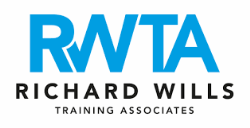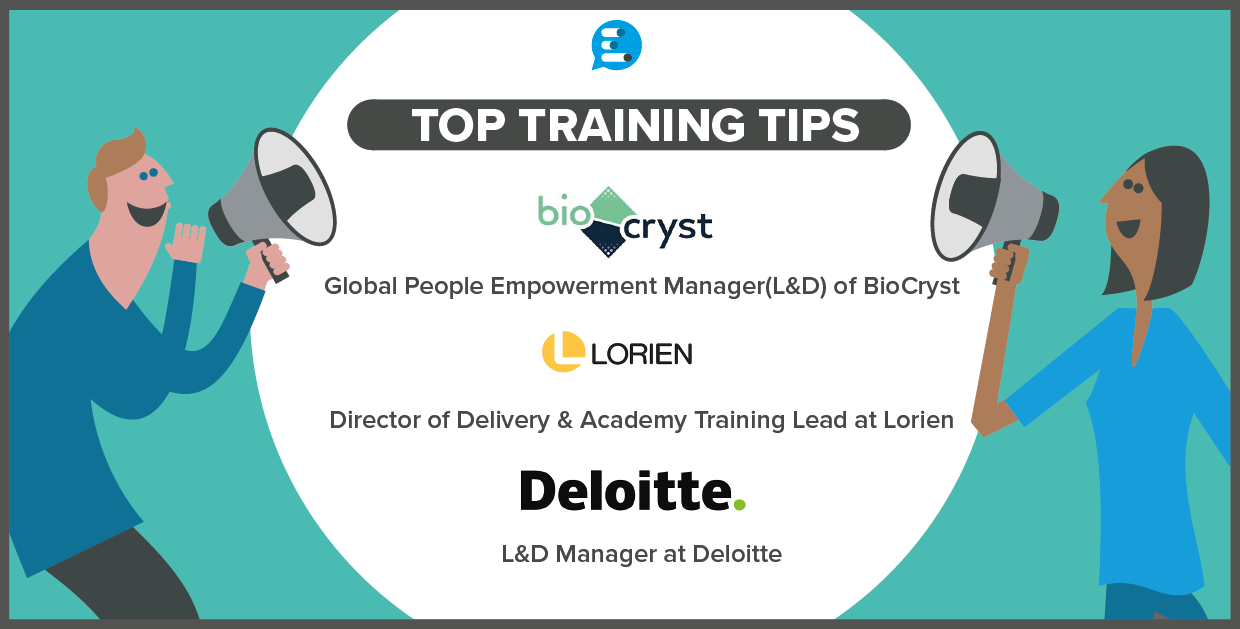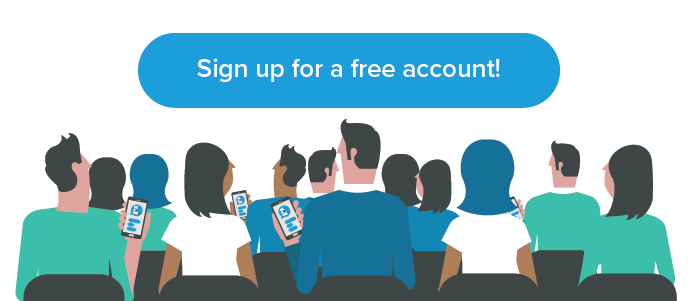Please note: all quotes from Training Professionals that were shared with me below via LinkedIn are their own thoughts and not in anyway indicative of their employer
Employee training is an essential investment for organizations wanting to improve employee performance, staff retention and overall organizational success. However, not all training is created equal and there are several crucial factors organizations need to consider when designing and implementing effective L&D programs and training sessions. In the first part of this trilogy, we explore what is L&D and what 4 key steps to designing a training program.
Over the last couple of weeks, I've asked training and L&D professionals in my LinkedIn network and groups to share their thoughts of what they thought was the 'most important factors when it comes to employee training sessions and programs'. It was great to receive so many messages and responses with lots of great tips, so I thought I would combined all the tips and break them down into themes in this article and in part 3 'employee training: engagement is key🔑 '.
For all of you that contributed to these articles, thank you once again!
Make your training authentic and meaningful to your audience...
Laura Newberry, Global People Empowerment Manager (Learning & Development) of BioCryst Pharmaceuticals commented:

Mine are Relevance, Inclusion, and Intrigue: 🎯 1) Relevance: As we navigate our bustling professional lives & sift through the digital noise, relevance is crucial. Ensure your sessions strongly resonate, providing clear benefits. Spark curiosity early, weaving in practical, work-integrated exercises.
✋ 2) Inclusion: Consider inclusion as active, collaborative engagement. We're rich with knowledge, keen to contribute. Shape your program into a diverse tapestry of dialogue, fostering psychological safety from the start. Accommodate different learning styles and personalities, empowering participants by encouraging them to lead when possible.
🤩 3) Intrigue: In a world prone to distraction, we must be masters of intrigue. Tap into the science of memory with emotional anchors to captivate. How can you surprise, delight even shock for "core memory"/aha moment creation? To transform a less from a memory into a behavioral reflex, keep the spark alive with varied, relevant reinforcements that mesh with their workflow, cultivating habits that stick.
Danielle Meek, Learning Technologist Assistant of NHS commented:

Provide opportunities for students to apply the learning to their own context, promoting critical thinking and a deeper analysis of what they are being taught. Perform knowledge checks at the start, during & end of training sessions to assess progression. Make the teaching inclusive, accessible & acknowledge intersectionality in course design.
Kim Stokes, Leadership & Capability Lead at
Suntory Beverage & Food GB&I commented:

Being an authentic facilitator: whilst you’ll have a session prpepared (whether designed by you or not) in my opinion, the sign of a great facilitator is one that can bring themselves to a session whilst ‘reading the room’ & delivering what is needed for that specific audience at that specific time. Having the confidence to change course: Fluidity & adaptability is so important. In my early days of facilitating I was so focused on needing to deliver ‘the slides’ & the full content that I’d planned that I didn’t do that, resulting in ineffective sessions. With experience I’ve learnt that ‘going with the flow’ & not being afraid to change course / spend much longer on certain pieces / skip over bits completely is more than ok; its servicing what your audience needs from you there & then.
Chris Hart, Director of Delivery & Academy Training Lead at Lorien commented: 
It needs to be your own content, based on your own experiences. Not a rehash of a session someone else has taught you. It needs to be authentic, not just because this is what other trainers teach.
It also needs to be engaging, but not forced. I'm not a big fan of role-plays. I think they are a waste of time and old-school. There are other ways to make it engaging without forcing it.
Rich Wills, Director of Richard Wills Training Associates commented:

Apologies if this has been added already; there are so many brilliant comments to get through. Mine is simple. People buy people. Delegates need to buy you as a believable, trustworthy, honest and nice person first, before they buy anything you want to tell them. That is always my top tip to anyone entering the world of training/facilitating ❤️
Dafydd Dent, Consultant and Ex-Google L&D Lead commented:
My top piece of advice would be to build in human connection. Many, especially those working remotely, aren't getting the same level of deep conversations with colleagues. If you can build that into your course it can have a really positive impact, even outside of the content area.
Think about the design and practicality of your training program...
Jodie Pritchard, Director of L&D at Barnardo's commented:

“First thought is always ‘why are we designing something?’ I’m always amazed at the number of sessions that are created without clear reasoning of need. Once you’ve established there’s a business challenge to fix, then the next questions are ‘who’s our audience and what do they need?’ Always design for them and their needs, not what you think is needed.
Be open minded about what the solution is. Is it a session? Is it something else? Use your org knowledge to decide”.
Roshan John, Learning and Development (consultant) at Deloitte commented:

In my experience as a life long learner, the training should be designed keeping in mind the immediacy of application. The practicality and value of the skill to solve a relevant problem is key to learners' engagement and empowerment.
Danielle Johnson, Global Learning and Development at
JDE Peet's commented:

Practicality is essential. My associates are extremely time poor so they need to leave a session having actionable steps and behaviors that they can use to be more efficient and enjoy their jobs. Additionally, allowing for interactivity and discussion between participants is extremely valuable. They love sharing ideas and experiences. Lastly, self-awareness is always interesting so a training that teacher them something new about themselves, the way they work, the way they connect with others has always been well received. Hope this helps!
Alan Thompson, Director & Founder at
MAP Training commented:

As a former sports coach as well as now a designer of training programs, I always put myself in the trainees shoes and ask myself if I would enjoy the session and feel it was a valuable use of my time. If not, I haven’t designed it well enough!
Make learning continuous and motivational...
Ben Hurrell, Director of Learning and Development at GDS Group commented: 
It doesn't start and end with the session.Truly transformative learning experiences begin with engagement in the learning, then through fantastic ways to participate and critically through embedding and sustaining that learning through leadership, coaching, resources, practice etc. Oh... and don't be boring and school like 🤣
Nick Jenkins, Founder and Partner of Nick Jenkins Ltd, Wonder Worldwide and Coach of Ground and Air commented:

1) Towards the end of the session, building into the agenda dedicated time for people to consider their key learnings.
2) Deciding what tangible actions they will take to transfer / apply those learnings (sharing this with the group if appropriate, for greater accountability).
3) Agreeing before the session ends how and when they will subsequently check in on their progress - also a great way to ensure accountability.
The checklist to devising an effective training session
Effective employee training is fundamental to the success of any organization. The investment of effective training helps to create and maintain a talented workforce that can help to produce real results that relate to the businesses objectives. By following these tops tips and steps created by L&D and training experts in their industries, it will help you to really think out the elements behind what creates an effective training session, those being:
- Designing a well-thought training program that underpins the objectives of the business and the end goal for the course
- Creating relevant and authentic content that will inspire and help employees to really understand the learning at hand
- Make the learning experiences continuous and engaging that it will help to reinforce the learning and application at all times
- Ensure that the learning outcomes are thoroughly explained and knowledge checks and feedback points happen to measure the learning experience
- The right approach to employee training can result in improved employee engagement, job satisfaction, and retention, contributing to overall business success
Other key themes that came through in suggestions and LinkedIn comments was the importance of making sure training sessions are truly engaging at all touchpoints and that presentations are interactive and fun! I decided that I would dedicate another article to these tips, so please feel free to carry on to read what training professionals (from the likes of GKN Aerospace, Suntory Beverage & Food GB&I and Optimus Search) has to say in "Employee Training: Why continual engagement is key".
- Loving our training content... why not read more on our training/L&D blog here.
- Want to use live polling, anonymous Q&A, live quizzes, real-time word clouds and more in your training? Learn more about Vevox and sign up for free!





